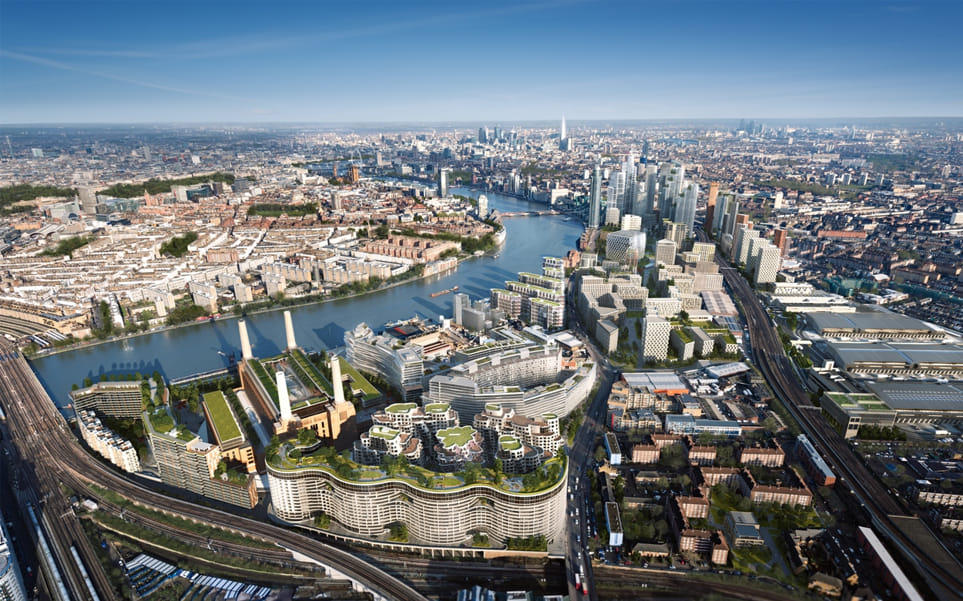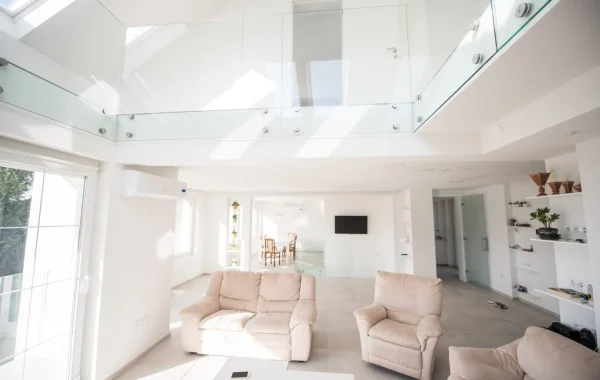Wandsworth Nine Elms: Unveiling the Future through Change of Use
The transformation of Wandsworth Nine Elms is a powerful narrative of urban regeneration, reflecting London’s commitment to sustainable and innovative development. This district, nestled along the southern bank of the Thames, has been a focal point for ambitious redevelopment initiatives. These initiatives are encapsulated in the ‘change of use’ strategy, a pivotal element in redefining the district from an industrial past to a vibrant, multifunctional urban space. This article delves deep into the Wandsworth Nine Elms change of use, examining its historical roots, driving forces, key projects, impacts, and future directions.
Historical Context of Nine Elms
Nine Elms has a rich industrial heritage, once thriving as a bustling hub of warehouses, factories, and railway infrastructure. The area’s strategic location by the River Thames made it a crucial node for transportation and logistics. However, as the 20th century progressed, industrial decline set in, leaving Nine Elms dotted with derelict buildings and underused land. The once-vibrant industrial area became a canvas for urban decay, underscoring the urgent need for revitalization.
In response to this decline, the London Borough of Wandsworth, along with various stakeholders, embarked on a comprehensive regeneration plan aimed at transforming Nine Elms. The change of use strategy is central to this plan, aimed at reimagining the district as a dynamic, mixed-use area that meets the demands of contemporary urban life.
Understanding the Concept of Change of Use
Change of use in urban planning involves reclassifying the purpose of land or buildings to better align with evolving urban needs. This concept is crucial in enabling cities to adapt to demographic changes, economic shifts, and environmental goals. In Nine Elms, the change of use focuses on transitioning from predominantly industrial uses to a blend of residential, commercial, and cultural spaces. This reclassification aims to optimize land use, stimulate economic activity, and enhance the quality of life for the community.
Key Drivers of Change
Several key factors drive the change of use in Wandsworth Nine Elms:
Economic Revitalization: A primary driver is the need to boost economic activity. By attracting businesses, investors, and residents, the change of use aims to create a bustling economic hub, generating jobs and stimulating investment.
Population Growth: London’s growing population necessitates the development of new housing and amenities. Nine Elms addresses this demand with high-density residential options and supporting infrastructure, easing the housing crunch.
Sustainability Goals: Modern urban planning prioritizes sustainability. The regeneration of Nine Elms incorporates green spaces, eco-friendly buildings, and sustainable infrastructure to reduce environmental impact and promote a healthier urban environment.
Social and Cultural Integration: Building a cohesive and inclusive community is a key objective. The change of use strategy includes developing cultural institutions, public spaces, and social amenities that foster community engagement and integration.
Major Projects and Developments
The Wandsworth Nine Elms change of use includes several high-profile projects, each contributing uniquely to the area’s transformation:
Battersea Power Station: This iconic project transforms the historic power station into a mixed-use complex with luxury apartments, office spaces, retail outlets, and leisure facilities. The redevelopment blends historical architecture with modern design, making it a symbol of Nine Elms’ renaissance.
Embassy Gardens: Home to the new U.S. Embassy, Embassy Gardens exemplifies the area’s international appeal. This development includes residential units, commercial spaces, and public areas, providing a luxurious and cosmopolitan living environment.
Nine Elms Park: A new linear park running through the district, Nine Elms Park offers green space and recreational facilities. It serves as a green artery that connects different parts of the development, promoting outdoor activities and environmental sustainability.
New Covent Garden Market: The modernization of this historic market integrates wholesale functions with retail and public engagement spaces. It aims to serve both the business community and local residents, enhancing the area’s food culture and market tradition.
Linear Park: Stretching across Nine Elms, this park provides a continuous green space that encourages outdoor activities, supports biodiversity, and enhances the aesthetic appeal of the district.
The Northern Line Extension: The extension of the Northern Line to Battersea enhances connectivity, making Nine Elms more accessible and boosting its appeal as a residential and commercial destination.
Implications of the Change of Use
The change of use in Wandsworth Nine Elms has profound implications for the district and beyond:
Economic Impact: The transformation is expected to significantly boost the local economy. New businesses, offices, and retail outlets will create jobs and attract investment, contributing to London’s overall economic vitality.
Social Dynamics: The development of mixed-use spaces promotes social cohesion and inclusivity. Diverse housing options and community amenities enhance the quality of life and foster a sense of belonging among residents.
Environmental Benefits: Sustainable design principles and green spaces improve urban biodiversity and reduce the environmental footprint. These efforts support London’s broader sustainability goals and contribute to a healthier living environment.
Transportation and Infrastructure: Improved transportation links, including new underground stations and enhanced road networks, facilitate better connectivity. This enhanced accessibility is crucial for the success of the area’s regeneration, making it an attractive destination for residents and visitors alike.
Community Engagement and Social Integration
One of the central aims of the Nine Elms regeneration is to foster a vibrant, inclusive community. This involves creating a diverse housing stock, from luxury apartments to affordable housing units, ensuring that the area caters to a broad demographic spectrum. The development also includes social amenities such as schools, healthcare facilities, and community centers, which are essential for a cohesive community.
Public spaces play a crucial role in social integration. The design of Nine Elms includes numerous parks, plazas, and pedestrian-friendly streets that encourage social interaction and outdoor activities. Cultural institutions, such as galleries, theaters, and museums, are also part of the plan, enriching the community’s cultural life and fostering a sense of place.
Challenges and Solutions
While the transformation of Nine Elms presents numerous opportunities, it also poses significant challenges:
Gentrification: There is a risk that the influx of high-end developments could lead to gentrification, displacing long-standing residents. To mitigate this, the development plan includes provisions for affordable housing and initiatives to support local businesses.
Infrastructure Strain: The rapid development could strain existing infrastructure. To address this, the plan includes significant investments in transportation, utilities, and public services, ensuring that the infrastructure can support the growing population.
Environmental Concerns: Large-scale construction projects can have negative environmental impacts. The Nine Elms regeneration emphasizes sustainable building practices, green spaces, and eco-friendly infrastructure to minimize its environmental footprint.
Community Engagement: Ensuring that the development meets the needs of existing residents requires ongoing community engagement. Regular consultations and feedback mechanisms are in place to involve the community in the planning process.
Future Prospects
The future of Wandsworth Nine Elms looks promising, with numerous ongoing and planned projects set to further enhance the area:
Continued Investment: The success of initial projects is likely to attract further investment. Developers and businesses recognize the potential of Nine Elms, ensuring continued economic growth and development.
Technological Integration: Incorporating smart city technologies will enhance the efficiency and sustainability of urban services. From smart grids to advanced waste management systems, these innovations will make Nine Elms a model for future urban developments.
Cultural Evolution: As the area develops, its cultural landscape will continue to evolve. More institutions, events, and public spaces will enrich the community, making Nine Elms a cultural hotspot.
Global Recognition: Nine Elms is poised to gain international recognition as a prime example of successful urban regeneration. Its transformation will serve as a blueprint for similar projects worldwide, showcasing the potential of thoughtful urban planning.
Conclusion
The Wandsworth Nine Elms change of use represents a bold and forward-thinking approach to urban regeneration. By repurposing industrial land into a dynamic, mixed-use community, the area is set to become a thriving economic, social, and cultural hub. As London continues to grow and evolve, the lessons learned from Nine Elms will undoubtedly inform future urban planning initiatives, ensuring that the city remains at the forefront of sustainable and inclusive development. The transformation of Nine Elms is not just a local success story; it is a beacon of what is possible when visionary planning meets community engagement and sustainable practices.





